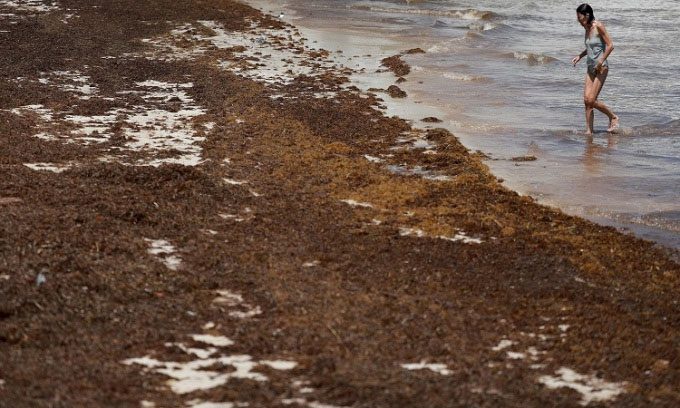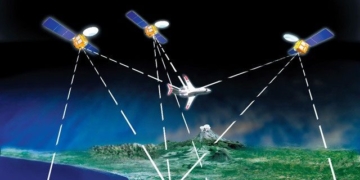A Massive Algal Bloom Approaches Florida’s Beaches, Filled with Plastic and Harmful Bacteria.
According to a study published in the journal Water Research, the algal bloom laden with plastic and bacteria could create a “pathogen storm” in the Atlantic Ocean. Originating from the Sargasso Sea in the North Atlantic, the brown algae known as sargassum has become an increasingly significant issue for beaches around the world in recent years as large mats of algae wash ashore. NASA predicts that the sargassum bloom this year along the Caribbean coast and East Florida will be the largest in history. Experts anticipate that sargassum will hit the beaches in the area in June and July.

A beachgoer walks past a sargassum mat washed ashore on May 18 in Key West, Florida. (Photo: Joe Raedle).
Sargassum accumulation often emits a foul odor, is dense, and contains potentially dangerous bacteria from the Vibrio family. “Vibrio can thrive in both plastic and sargassum. They can carry genes that may cause disease,” said Linda Amaral-Zettler, a marine biologist at the Royal Netherlands Institute for Sea Research and co-author of the study. “There are some rather alarming cases of infections caused by Vibrio. Their flesh-eating ability is rare but does exist.”
More than a dozen species of bacteria in the Vibrio family cause vibriosis, a type of illness that can occur when humans ingest the bacteria or when they infect through open wounds. In cases of gastrointestinal entry, the bacteria can cause severe diarrhea, abdominal cramps, fever, and vomiting. When infecting through wounds, one species in the Vibrio family can sometimes cause necrotizing fasciitis.
In the study, scientists analyzed sargassum samples taken from the Caribbean Sea and Sargasso Sea, finding no V. vulnificus or V. cholerae, two Vibrio species that infect humans. V. vulnificus is the only Vibrio species known to cause necrotizing fasciitis. However, the research team discovered several previously undescribed Vibrio species carrying important genes similar to those of pathogenic relatives. Their analysis indicated that these species also possess the necessary “mechanisms” to infect and cause disease in humans.
According to Amaral-Zettler, the sargassum mass contains a significant amount of plastic, allowing Vibrio bacteria to quickly adhere and proliferate. The Vibrio in sargassum can have various environmental impacts. Similar to humans, fish that ingest Vibrio can suffer from diarrhea, releasing nutrients into the environment, which helps sargassum accumulate and consume more oxygen in the water, creating “dead zones” where other marine life cannot survive.
However, concerning human health, the presence of Vibrio in sargassum is not alarming, according to Hidetoshi Urakawa, a microbial ecologist at Florida Gulf Coast University, who was not involved in the study. Currently, Florida authorities do not test for Vibrio in sargassum washed ashore, but they still advise beachgoers to avoid getting too close to the algal masses. To mitigate potential threats, including Vibrio infections, residents should avoid swimming around or touching sargassum whenever possible, especially if they have open wounds, according to the Florida Department of Health.


















































